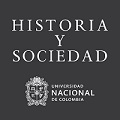SECURITY AND JUSTICE UNDER HARASSMENT IN TIMES OF NEOLIBERAL VIOLENCE
responses of the Community Police of Guerrero
Keywords:
Neoliberal vilence, Guerrero, Indigenous peopleAbstract
The community police is an institution of the Indigenous Peoples of Guerrero known for its ability to deal with crime and generate alternatives for social peace, using a system of justice and self security. In recent years, however, the EU system faces harassment from various people responsible for the increase of violence and insecurity within the country and especially in the state in Guerrero; this situation is impacting instituitions in the community, forcing their redefinition. In this paper I highlight key aspects of the conflict and the community's responses to deal with the tasks of justice and security in new contexts marked by neoliberal plunder and impunity of the state (as well as non state figures). In this process, the relationship of the community police with the state is updated revealing the weight of legal ambiguity and power plays, as well as counter-hegemonic use of the right to dispute justice.
Downloads
References
la Costa Grande. México, Era, 2000.
CRAC- Curso de formación de promotores / INAH-Programa Actores Sociales de
la Flora Medicinal “En la Montaña de Guerrero y la Costa Chica sus efectos en la
salud y el medio ambiente: ¿Cómo prevenirnos de sus acciones?” Presentación en
PP en http://www.policiacomunitaria.org/mineria/mineria
Centro de Derechos Humanos Tlachinollan (2012) Desde el grito más hondo y
digno. Informe XVIII, junio 2011 ”“ mayo 2012, www.tlachinollan.org/Informe-deactividades/
(Consultado el 12 de febrero del 2012).
COMAROFF, Jean y John, COMAROFF. Violencia y ley en la poscolonia: una
relexión sobre las complicidades norte-sur. Katz editores, Madrid, 2009.
DASS, Veena y Deborah POOLE (eds.) Anthropology in the Margins of the State.
Scool of American Research Press. Santa Fe, New México, 2004.
DE MARINIS, Natalia. “Indigenous rights and violent state construction: the
struggle of Triqui women in Oaxaca.” En SIEDER, Rachel y John MC NEISH.
Gender Justice and Legal Pluralities. Latin American and African Perspectives.
Routledge, London and New York, 2012.
HANSEN, Thomas Blom y Finn STEPPUTAT (eds.) States of Imagination.
Ethnographic Explorations of the Postcolonial State. Duke University Press, 2001.
HARVEY, David. The New Imperialism. Oxford, Oxford University Press, 2003.
HERNÁNDEZ, R. Aída, M. Teresa SIERRA, Rachel SIEDER y Mariana MORA.
“Más Estado es más seguridad. En defensa de la autonomía indígena.” En Rev.
Ichan Tecolotl. CIESAS, año 23, núm. 272, p. 13-16, 2013.
La Voz de la Costa Chica, Radio Comunitaria en San Luis Acatlán, http/www.
policiacomunitaria.org/ (Consultada el 5 de octubre del 2012)
Ley 701 de Reconocimiento de derechos y cultura de los pueblos y
comunidades indígenas del estado de Guerrero ) http://www.guerrero.gob.mx/
consejeriajuridica consejeria_juridica@guerrero.gob.mx, consultado 20 de abril
de 2013)
MERCADO, Florencia. Análisis de la argumentación jurídica en el Sistema de
Seguridad e Impartición de Justicia Comunitaria Regional en la Costa Montaña
de Guerrero: Policía Comunitaria. Tesis de Maestría en Antropología Social,
México, UAM-Izt., 2009.
ORTEGA, Amor. La policía comunitaria en la Costa Chica y Montaña de
Guerrero. De la organización para la seguridad pública a la seguridad comunal.
Tesis de Licenciatura en Sociología. México, FCPyS, UNAM, 6 de febrero de
2009.
POOLE, Debora. “Between Threat and Guarantee: Justice and Community in
the Margins of the Peruvian State.” En DASS, Veena y Deborah Poole (eds.)
Anthropology in the Margins of the State. Scool of American Research Press,
Santa Fe, New Mexico, p. 35-66, 2004.
SANTOS, Boaventura. La refundación del Estado en América Latina.
Perspectvias desde una epistemología del Sur. Instituto Internacional de Derecho
y Sociedad, Lima, 2010.
SANTOS, Boaventura y César Rodríguez. Law and Globalization from Below:
Towards a Comsmopolitan Legality. Cambridge Univertsity Press, Cambridge, 2005.
Downloads
Published
How to Cite
Issue
Section
License
The published material is the property of the Journal, and may be reproduced in whole or in part with indication of the source.
Copyright: Authors will be responsible for obtaining the copyright of the material used. Authors who publish in this journal agree to the following terms:
a)Authors retain the copyright and grant the journal the right of first publication, with the work simultaneously licensed under
the Creative Commons Attribution License which allows the sharing of work with acknowledgment of authorship and initial publication in this journal.
b) Authors are authorized to take additional contracts separately, for non-exclusive distribution of the version of the work published in this journal (eg, publish in institutional repository or as a book chapter), with acknowledgment of authorship and initial publication in this journal.
c) Authors are allowed and encouraged to publish and distribute their work online (eg in institutional repositories or on their personal page) at any point before or during the editorial process, as this can generate productive changes as well as increase the impact and the citation of the published work (See The Effect of Free Access).
















